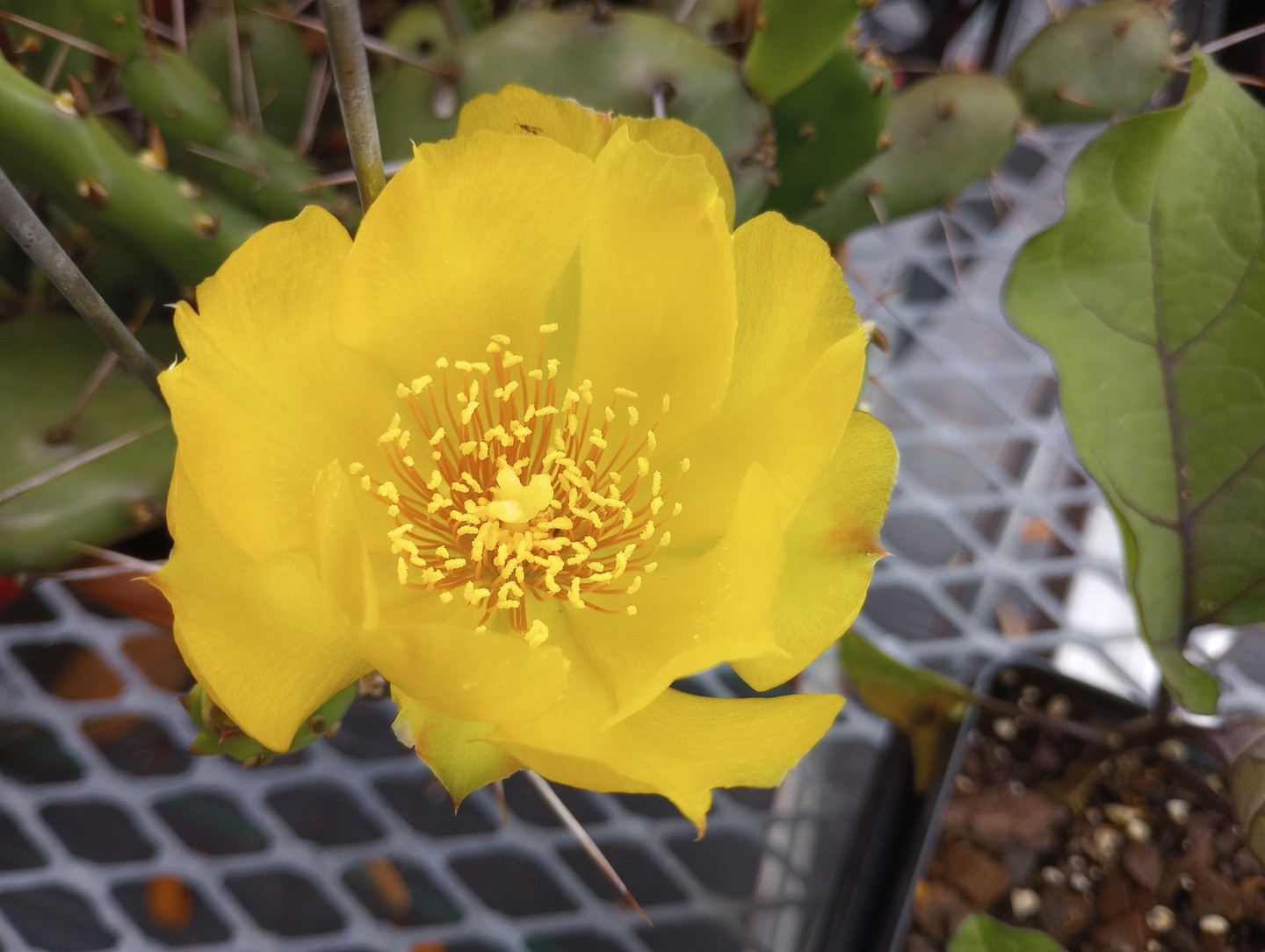Summary:
1. Introduction to the Dune Prickly Pear, a native coastal nectar plant thriving in barrier island habitats.
2. Importance of Dune Prickly Pear in wildlife conservation and native landscaping.
3. Homing in on the Crystal Skipper butterfly, an endemic species facing habitat fragmentation due to urban development.
4. The impacts of human activities, buildings, and homes on the Crystal Skipper butterfly’s habitat.
5. Call to action for individuals to support wildlife conservation efforts and protect the natural habitats of these species.
Picture this: a beautiful coastal landscape with vast dunes strung as far as the eye can see. Amidst this sandy paradise, our awesome horticulturalist, Freda, has shared the captivating blooms of the Dune Prickly Pear. These native coastal nectar plants thrive in the unique habitat of barrier islands, making them vital for wildlife conservation.
The Dune Prickly Pear, also known by its scientific name Opuntia humifusa, is a fascinating plant adapted to the harsh conditions of sandy dunes. These plants require well-drained soil and an abundance of sunlight to flourish. And flourish, they do! With their bright blooms, the Dune Prickly Pear provides a feast for the eyes, a valuable food source, and protection for the wildlife that call these islands home.
But what makes these plants truly exceptional is their versatility in native landscaping. The Dune Prickly Pear is a perfect addition to creating a natural oasis in their backyard. Not only does it bring beauty and color to the landscape, but it also attracts various pollinators, including our wonderful Crystal Skipper butterfly.
Ah, the Crystal Skipper – a majestic creature endemic to a 30-mile stretch of barrier islands just down the road from our beloved Aquarium, nestled between Fort Macon State Park and Hammocks Beach State Park. This butterfly is a true gem, unique to this specific region. However, as urban development encroaches upon its habitat, the Crystal Skipper faces the detrimental effects of habitat fragmentation.
Human activities, buildings, and homes transform the once-pristine landscapes into concrete jungles. As the Crystal Skipper’s habitat becomes fragmented, its population declines and its future hangs in the balance. This is where every one of us can make a difference.
We have the power and responsibility to protect the natural habitats of these incredible species. By understanding the importance of native plants like the Dune Prickly Pear, we can create a ripple effect in our communities. Native landscaping provides a haven for the Crystal Skipper butterfly and a suppoandverse array of wildlife that relies on these unique ecosystems.
Imagine a world where we can enjoy the beauty of nature alongside thriving wildlife – a world where we embrace our role as stewards of the environment. It all starts with small actions, making conscious decisions about our gardens, yards, and landscapes. By planting native species like the Dune Prickly Pear, we can help recreate the interconnected web of life that once flourished on these barrier islands.
As our horticulturalist Freda has shown us, the Dune Prickly Pear symbolizes resilience and adaptability. It has survived and thrived in the harshest environments, providing wildlife sustenance and refuge. We can learn much from this incredible plant and apply its lessons. Let us embrace the beauty of nature, protect our local wildlife, and ensure a brighter future for all.
In conclusion, the Dune Prickly Pear and the Crystal Skipper butterfly are ambassadors for our natural world’s incredible diversity of life. They remind us of the fragile balance between human progress and the preservation of our ecosystems. Together, by embracing native landscaping and supporting wildlife conservation efforts, we can make a real difference. Let’s tread lightly on this beautiful Earth and leave a legacy of love and respect for future generations.
*****
Source Description
Our awesome horticulturalist, Freda, shared these bright blooms with us! They are Dune Prickly Pear, a native coastal nectar plant. They can be seen growing during the summer among the dunes of the islands. They thrive in this habitat because they need well-drained soil and a lot of sun. It’s a beautiful plant that provides food and protection for wildlife and can be used in native landscaping.
These are great plants for the Crystal Skipper butterfly that’s endemic to a 30-mile stretch of barrier islands just down the road from the Aquarium, between Fort Macon State Park and Hammocks Beach State Park. The Crystal Skipper is experiencing habitat fragmentation due to urban development because of human activities, buildings, and homes.


